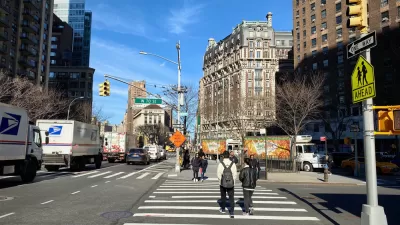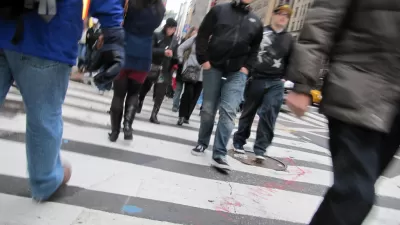When you are trying to get people's attention, a city feels very different.

Over the past month, I wandered the streets of Manhattan, collecting petition signatures in order to get on the ballot for the 2021 municipal election.* Because I am running for a borough-wide office (Borough President) I would approach people on the street, asking "Are you registered to vote in Manhattan?" If they said yes, I would ask them to sign a petition to get me on the ballot; the law required me to get 2,000 signatures, about 10 percent of which I got myself; most came from professional signature gatherers who I had hired. The process of trying to be heard taught me a little about the city's sidewalk ballet.
For example, I learned that major streets in Manhattan are really, really loud—mostly because of car traffic, but occasionally due to construction noise as well. This may seem pretty obvious to most people, but when I was a solitary pedestrian who wasn't trying to get anyone’s attention, I was not particularly annoyed by noise pollution. But when I was trying to get people's attention, I found that noise was a significant obstruction.
On the other hand, not every street was equally noisy. The loudest streets were Manhattan's north-south avenues, which tend to be wider and thus more dominated by automobiles. By contrast, I had less difficulty being heard on the city's east-west streets, which tend to be narrower, which in turn leads to less car traffic, which in turn leads to less noise. So I had difficulty deciding whether to focus my energies on the avenues (with lots of people, most of whom were easily distracted) or the streets (where walkers were less numerous but more attentive). One broader lesson for planners is that the density of cars, rather than the density of population, creates most street noise.
Another variable was sidewalk congestion. On streets with wide sidewalks and/or moderate levels of pedestrian traffic, people were more willing to notice me and to speak to me—even on relatively busy streets like Broadway or West 72nd Street. But on streets where there were lots of people walking and just barely enough sidewalk to accommodate them, the stereotype of fast-walking New Yorkers seemed to fit reality: people hurried past me, perhaps because they were afraid of bumping into people in back of them. As a result, Midtown (the most heavily trafficked area) was the worst area for petitioning, while the Upper East and Upper West Sides were a little better.
More broadly, I realized how the state's petition requirements, like so many other public policies, have disproportionate impacts on urban spaces. In suburb-like Staten Island, candidates can get signatures by going door-to-door among their neighbors. But in much of Manhattan, most people live in large or medium-sized apartment buildings, so this isn’t really an option; candidates and their supporters must get their signatures on the streets. As a result, the petition requirements make it more difficult and expensive to get on the ballot in the city, while burdening political competition far less in suburbs or in rural areas.
*I am cautiously optimistic about ballot access but will not know for sure until later in June.

Alabama: Trump Terminates Settlements for Black Communities Harmed By Raw Sewage
Trump deemed the landmark civil rights agreement “illegal DEI and environmental justice policy.”

Planetizen Federal Action Tracker
A weekly monitor of how Trump’s orders and actions are impacting planners and planning in America.

The 120 Year Old Tiny Home Villages That Sheltered San Francisco’s Earthquake Refugees
More than a century ago, San Francisco mobilized to house thousands of residents displaced by the 1906 earthquake. Could their strategy offer a model for the present?

BLM To Rescind Public Lands Rule
The change will downgrade conservation, once again putting federal land at risk for mining and other extractive uses.

Indy Neighborhood Group Builds Temporary Multi-Use Path
Community members, aided in part by funding from the city, repurposed a vehicle lane to create a protected bike and pedestrian path for the summer season.

Congestion Pricing Drops Holland Tunnel Delays by 65 Percent
New York City’s contentious tolling program has yielded improved traffic and roughly $100 million in revenue for the MTA.
Urban Design for Planners 1: Software Tools
This six-course series explores essential urban design concepts using open source software and equips planners with the tools they need to participate fully in the urban design process.
Planning for Universal Design
Learn the tools for implementing Universal Design in planning regulations.
Clanton & Associates, Inc.
Jessamine County Fiscal Court
Institute for Housing and Urban Development Studies (IHS)
City of Grandview
Harvard GSD Executive Education
Toledo-Lucas County Plan Commissions
Salt Lake City
NYU Wagner Graduate School of Public Service





























